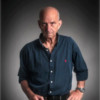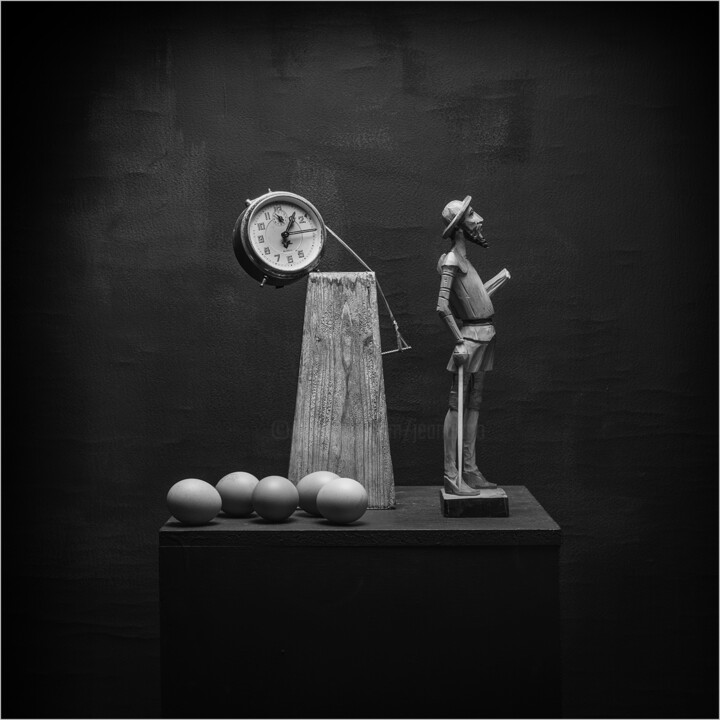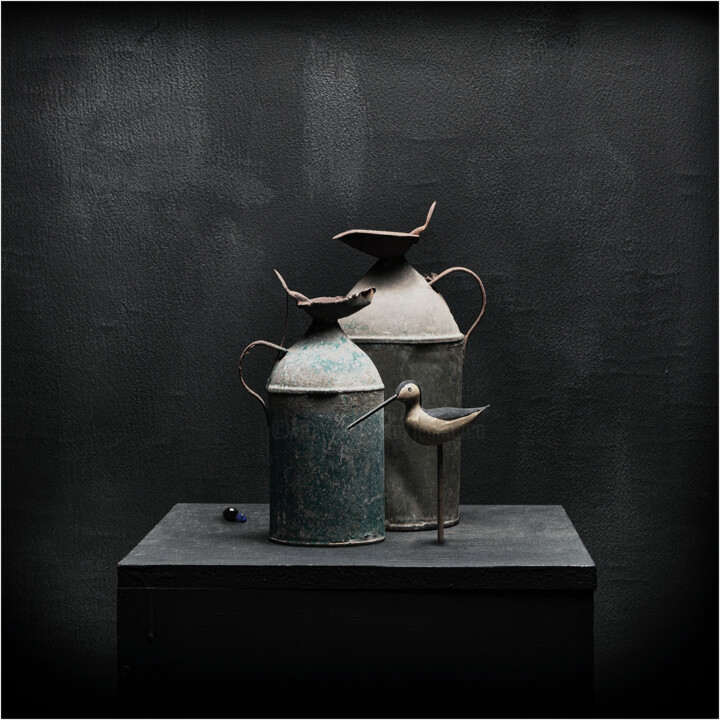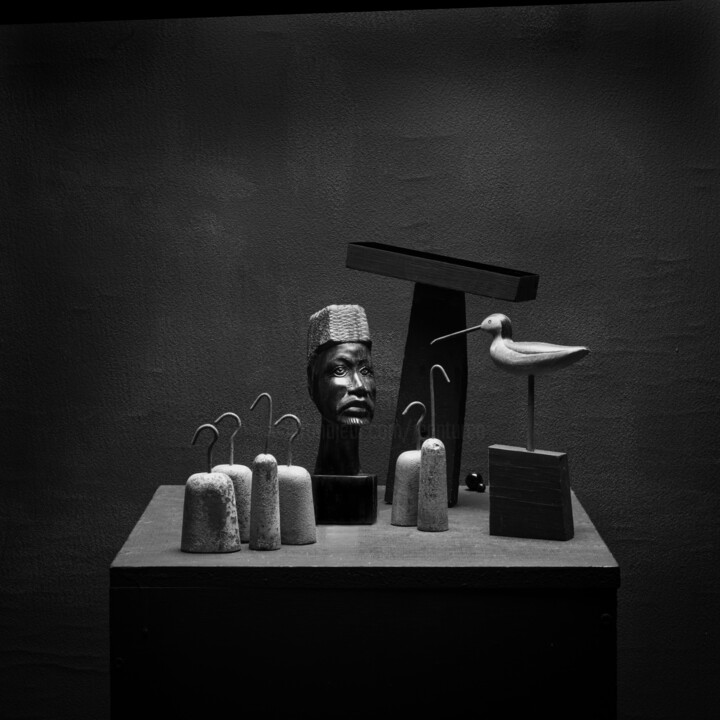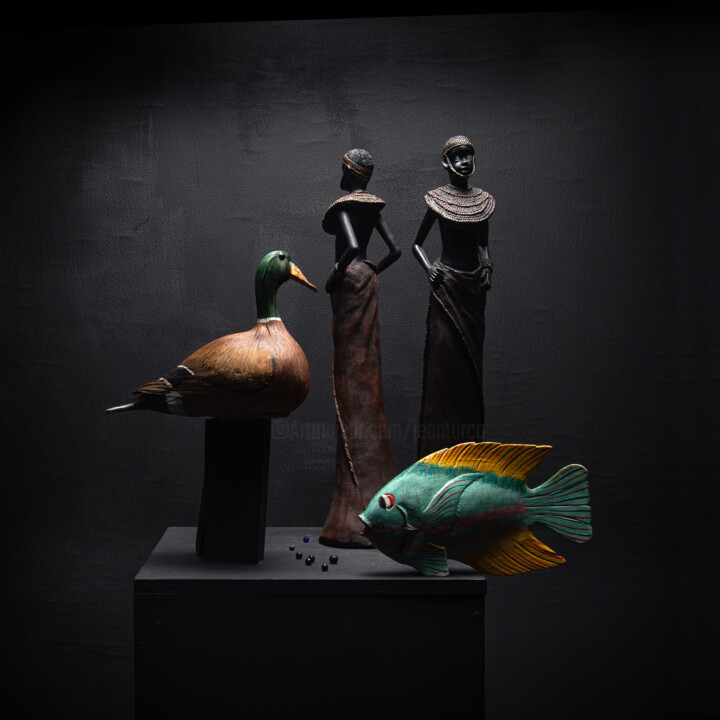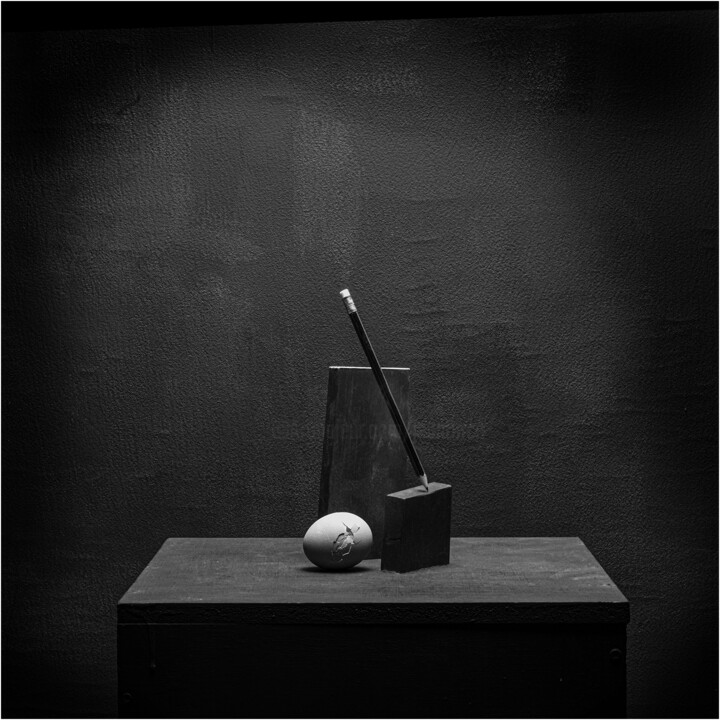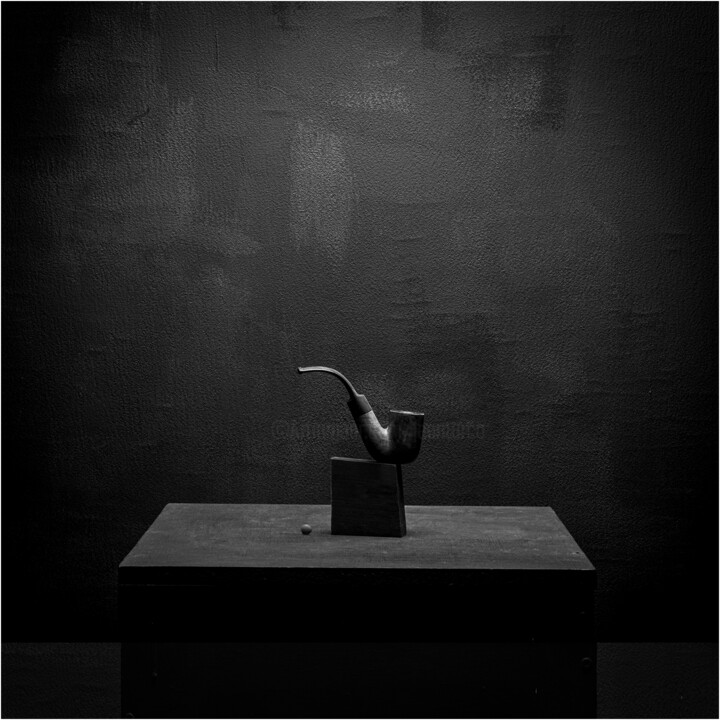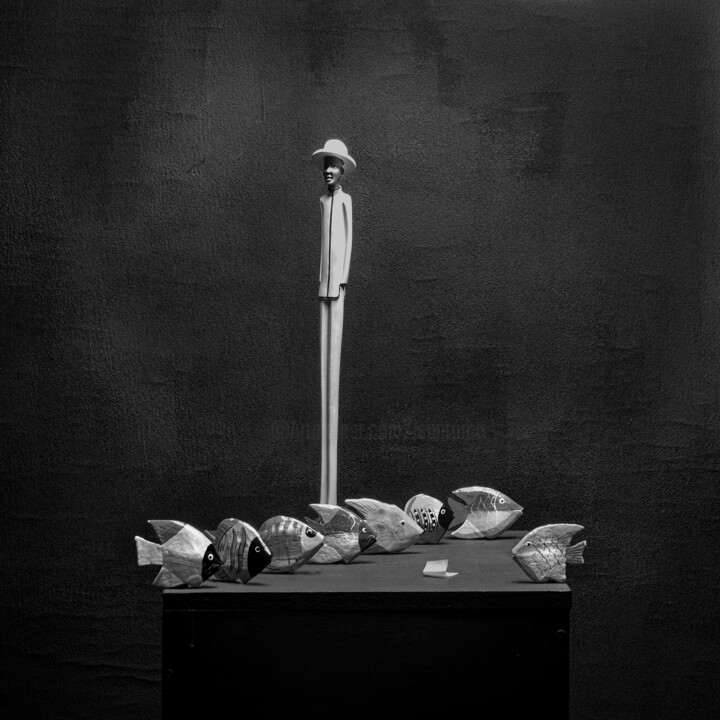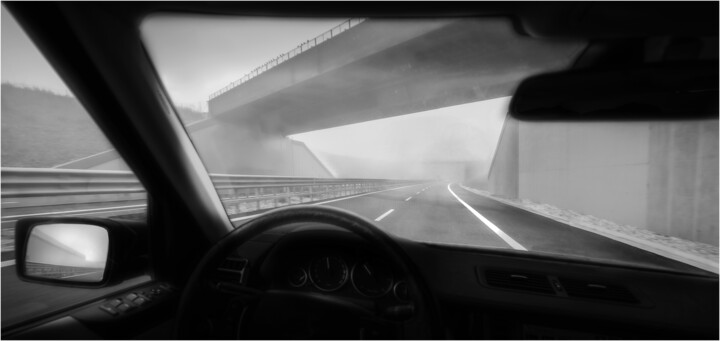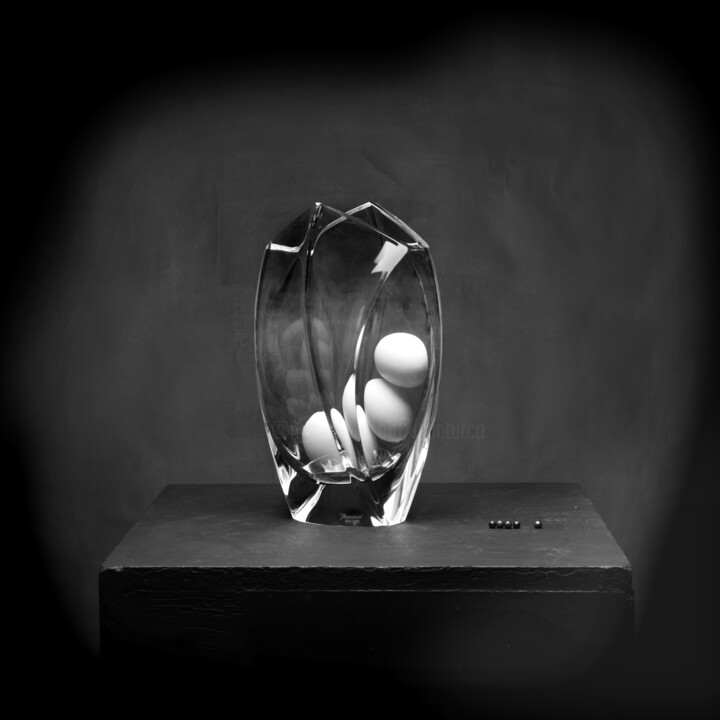What inspired you to create works of art and to become an artist? (events, feelings, experiences...)
My idea has always been to share the pleasure I had in seeing one or other of the things that present themselves to our gaze, either as they actually are when the light highlights them, or in my way of seeing them, of extracting them from their context to make images illustrating an idea, a smile or a message to a muse, a friend, a collector or to someone who does not know me and whom I do not don't know, whose gaze will stop on my photographs.
What is your artistic background, the techniques and subjects you have experimented with so far?
I think I have tried all the techniques that allow to express an emotion or a simple interpretation of things; starting from sculpture to painting, passing through engraving and drawing, poetry, music. But it quickly turned out that it was photography that suited me and allowed me the most to act according to my way of being, which is to conceive of life as a fleeting moment of which it is important not to lose a second and to live them with exaggeration, one hundred and eighty or two hundred percent.
What are the 3 aspects that differentiate you from other artists, making your work unique?
- The fact that I am absolutely basic and that I understand nothing of the conceptual discourses that I hear in galleries or exhibitions, even those developed by the critics who present me at exhibition openings and who, decidedly, must to be much smarter, or at least more and better educated than I am. The thing proves more particularly at the Rencontres d'Arles where, another extraordinary place in this sense, at the Biennale in Venice.
- The fact that, on the one hand, I use in a completely normal, logical and classic way the photographic material, film or not, that I have in large quantities and, on the other hand, that I use depending on the subject chosen or the purpose of the image, to produce the material that seems to me the most suitable, which could be a smartphone as well as a 20x25 technical camera.
- The fact that I love my contemporaries - more particularly and passionately women - and objects. This is undoubtedly the reason for my specialization in nude, portrait and still life photography, without, of course, neglecting the thousand other subjects that it is possible to photograph.
Where does your inspiration come from?
From the emotion caused by a look that I meet, a physique that surprises me, by its ugliness or its beauty, an object that has lived that I find at an antique dealer, a second-hand dealer or at a garage sale.
What is your artistic approach? What visions, sensations or feelings do you want to evoke in the viewer?
It all depends on the subject and my sensations and feelings differ if it is about nude, landscape, still life or other subjects. What I want above all is simply to share with whoever will watch what I did, what I liked, troubled, moved, seemed worthy of highlighting and how I visualized and then realized the image presented.
What is the process of creating your works? Spontaneous or with a long preparatory process (technical, inspiration from art classics or other)?
Here again there are several possibilities, either I come across or come across a subject that I immediately imagine in an image that I can do on site or in the studio, or, and this is the case for images for example “case coloniche” (farmhouses) where it is important that the light corresponds to what I consider ideal. In this case, once I have identified and located on Google map the places where I am going to operate, I determine the exact time at which the light will illuminate them according to the angle that suits me before going on site with the ideal equipment for the type of image I want to achieve.
Do you use a particular working technique? if so, can you explain it?
Talking about working technique is not really the way to describe my modus operandi which consists simply of seeing the light and, either outside, determining and waiting for the exact moment, and fleeting, when it will correspond to the one I estimate the best to illuminate the subject, or in the studio to recreate it so that it underlines and highlights what I want to show. The rest is simple technique which, in my opinion, is important to master in photography where the equipment and more than anything the knowledge of its limits and its operation are mandatory in order to be able to comfortably achieve the image that the we visualized.
This absolutely does not prevent the existence of marvelous images which are technically “failed” and sad images which are perfectly realized from a technical point of view. All rules have exceptions.
Are there any innovative aspects in your work? Can you tell us which ones?
I think that since Lascaux and the Chauvet cave artists have tried everything and everything has been done. And since I don't seek to surprise or shock, I don't feel the need to put my excrement in a box or urinate on a crucifix to try to exist.
Do you have a format or medium that you are most comfortable with? if yes, why ?
Until the birth of digital I mainly used 6x6 Hasselblad or 4x5 and 8x10 inches Sinar and I therefore got into the habit of composing my images either in these latter formats or in squares. I am therefore less comfortable with the formats of digital sensors in which I usually compose and cut into squares.
Where do you produce your works? At home, in a shared workshop or in your own workshop? And in this space, how do you organize your creative work?
Here again everything depends on what I have to do, I have three studios, one in France and two in Italy, equipped with electronic flashes and continuous light adapted, by their dimensions, to portraits or still lifes. For the other images, when large premises are useful to me, or for the workshops and Master-classes that I direct, I operate in rental studios, which offers the possibility of choosing places perfectly adapted to the intended use.
Does your work lead you to travel to meet new collectors, for fairs or exhibitions? If so, what does it bring you?
I travel a lot indeed, either to give courses, or for conferences or for my exhibitions, or even to present or "deliver" to certain collectors with whom I maintain friendly and non-commercial relations the images they have purchased. .
How do you imagine the evolution of your work and your career as an artist in the future?
I am 74 years old and my future is therefore relatively limited. Covid is a big worry for me, because with the help of lala Zhang, an exceptional Chinese woman who represents me in her country, I developed in China where one of my books on light has been translated and referenced, a solid network with local artists, galleries and collectors.
The virus, the blocking of borders, the fact of no longer sharing with these contacts other than in writing has certainly modified our relationships and objectively lost part of their quality to this day. I am impatiently awaiting the end of this pandemic to return there, but I am afraid that the work that had been done will have to be resumed completely and I do not know if it will still amuse me as much and if I will find my motivation intact for the TO DO.
What is the theme, style or technique of your latest artistic production?
I am in Italy for a large part of the year where, in addition to commissioned portraits and nudes, I do a lot of still life and, when the season is right, for the quality of the skies, the nature and the height of the cultures, I continue the realization with the idea of a dedicated volume, images of "coloniche case", farmhouses in fact, which go back to the "Bonifica" of the marshes and which, too large, too isolated, economically unmanageable today today, wither away and crumble inexorably one after the other
Can you tell us about your most important exhibition experience?
Without being the most important, the exhibition of which I have fond memories took place in China, where I moreover had the pleasure of walking the red carpet as guest of honor at Beijing-Photo after Paris-Photo. This Chinese exhibition in Beijing marked me, because I arrived at the airport in the evening with in my luggage, rolled up, 140 photographs which were to be exhibited the next day, the opening taking place at 6 p.m. And at 6 p.m. the next day, with Lala Zhang in charge, the 140 perfectly framed photos, some in formats more than five feet wide, were hung to the millimeter ready on the walls of a more than perfectly realized space. . This is happening in China, period.
If you could have created a famous work in the history of art, which one would you choose? And why ?
The "hunting scene" showing about fifteen felines pursuing a herd of bison from the Chauvet cave. Because it's painting that moves me the most when I think of those who did it and the conditions in which they did it.
If you could invite one famous artist (dead or alive) to dinner, who would it be? How would you suggest he spend the evening?
I will invite two of them, Picasso and Leonardo, and I will spend my evening listening to them talk to each other.

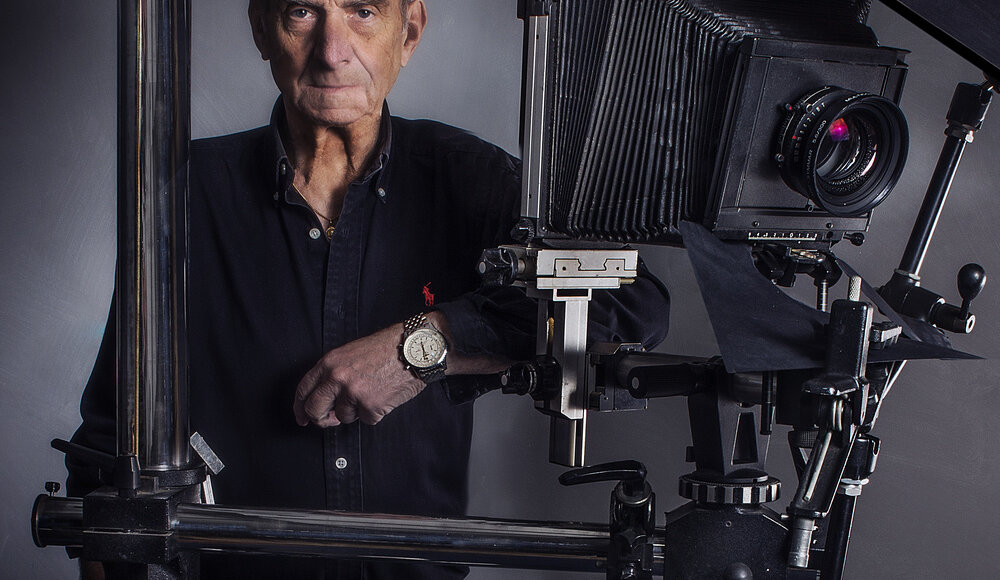





 Olimpia Gaia Martinelli
Olimpia Gaia Martinelli
